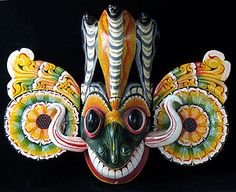The All Blacks wowed the world by becoming the team to win the most number of matches at the Rugby World Cup.
The HAKA, probably more widely known by Sri Lankans than the rest of the world, (maybe because of their sincere emotional affiliation with the All Blacks Rugby Team), is a much talked about subject these days, considering the great victory the All Blacks achieved.
So what is this HAKA? And why are the All Blacks so devoted to it?
The HAKA, is a traditional ancestral war cry, dance, or challenge from the Māori people of New Zealand. It is a dance performed by a group, with vigorous movements and stamping of the feet with rhythmically shouted accompaniment.
War Hakas were originally performed by warriors before a battle, proclaiming their strength and prowess in order to intimidate the opposition. This takes my memory back to a match played in Ireland in 1989. When the all blacks started the Haka, the Irish team started walking towards them and as the teams headed towards each other the Irish captain Willie Anderson got right up to the face of Wayne Shelford of the All Blacks without blinking an eye. That was the Irish response to the Haka. A game well played, but won nevertheless by the All Blacks. Seems like the Irish were definitely intimidated and felt the Haka needed an equally intimidating response.
Opposition players have long been critical of the Haka, saying that it gives New Zealand an unfair psychological advantage of intimidation before a game. Many players have simply not known how to respond to such a challenge, some have stood respectfully, some have come up with their own way to ‘accept’ the challenge, others have chosen to ignore it. In contrast to Willie’s response, David Campese, of the Wallabies, adopted a different approach. During the Haka, the famous Wallaby David Campese used to snub the Haka and practice warm up drills behind his own posts. Intimidated or intimidating? You decide….
Regardless, it has become a permanent part of the game and adds drama and tradition and controversy to the experience of an international test match.
The New Zealand sports teams’ practice of performing the Haka before their international matches has made the Haka more widely known around the world. This tradition began with the 1888–89 New Zealand Native football team tour and has been carried on by the New Zealand rugby team since 1905. In 2005 a new Haka was composed, the ‘Kapa o Pango’ which features a controversial ‘throat-slitting gesture’. According to the NZRU, the gesture is to symbolize the drawing of energy into the body, which is fitting with the Maori spirit.
Various actions are used during the course of a performance, including facial contortions such as showing the whites of the eyes and sticking out the tongue, along with a wide variety of vigorous body actions such as slapping the hands against the body and the stamping of feet. As well as chanted words, a variety of cries and grunts are used. The Haka may be understood as a kind of symphony in which the different parts of the body represent many instruments. The hands, arms, legs, feet, voice, eyes, tongue and the body as a whole combine to express courage, annoyance, joy or other feelings relevant to the purpose of the occasion. If the Haka was not performed in total unison, this was regarded as a bad prophecy for the battle.
However, the Haka voodoo seems to have hit the Sri Lankan Rugby scene….maybe due to the Sri Lanka Rugby’s lack of unity and its disorganized structure, especially when formulating the annual calendar. When you look at the state of rugby in Sri Lanka, and the lack of professionalism, lack of knowledge in fitness science and sports nutrition it’s almost as if it has gone to the devil (yakata gihin – like the locals would say). The sad reality is that most players and trainers focus so much of time on how to pump up their ‘rugby’ bodies and concentrate largely on strength and power without paying attention to the much needed skill development and ‘rugby prudence’ (rugby sense).

In my opinion, fans in New Zealand really know how to enjoy the game. When I say enjoy the game, I mean they enjoy the GAME…. Is that very difficult to understand? If it is…. You are a true Sri Lankan my friend! We find it difficult to enjoy the game…. We enjoy the environment, the food, the drinks, the fights, and hanging around with friends and family… AND we enjoy winning…. But we do not know how to enjoy the game. To appreciate the beauty that it’s played with. The beauty of rugby itself. We’ve lost that one: The Beauty of Rugby….
I watch with interest how intense our parents get, and how many actually go to watch school rugby matches (in contrast to parents in New Zealand, maybe 10 – 15 make an appearance). Well I’d say that’s a good thing, but only if the motive is good. Are they there to watch the kids play or to watch the game? Is it the love for rugby, or because they don’t want to miss their kid playing a match. Too engrossed with screaming and wishing the other team would lose, too busy finding fault with the other players, referees and coaches, too busy to notice the game. That’s why we Sri Lankans still haven’t made it anywhere significant in terms of rugby! We don’t know the game; we don’t watch the darn thing! We don’t even know how to love it!!! You MUST be one with the game. It is an emotional connection, a spiritual marriage. We should connect to a rugby game, the same way the All Blacks connect to the Haka.
For sure the Haka is a favourite with the rugby fans and has been partly responsible for selling out international matches. People pay, just to watch the Haka by the All Blacks!
What is really interesting though, apart from the cultural and traditional aspects is how this dance became so entwined with the national rugby team of New Zealand, and how, once the game’s administrators realized the global appeal of the Haka, it became enshrined in the legislature encircling the international game of Rugby Union with an edict on how to behave when facing the Haka. The Haka has become almost as big as the team itself, while it is revered by the people who watch the game; it’s another matter for those who play it.
The New Zealand All Blacks are, without a doubt, the best rugby team in the world right now, they may be the best ever. While the New Zealand Rugby Union are often accused of being indignant about the tradition, there is certainly no denying that the Haka adds something beautiful to the game of rugby, there is nothing else in sport that makes the hairs on the back of your neck stand on end every time you see it.
Oh the Haka …. Isn’t it a beauty!













